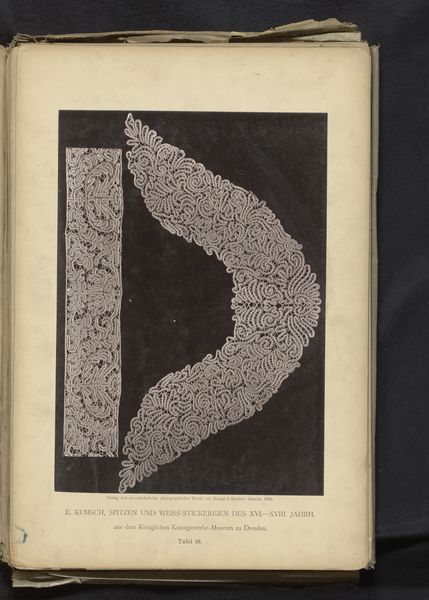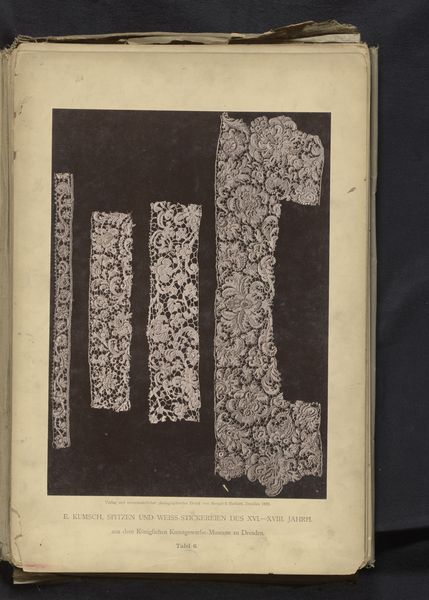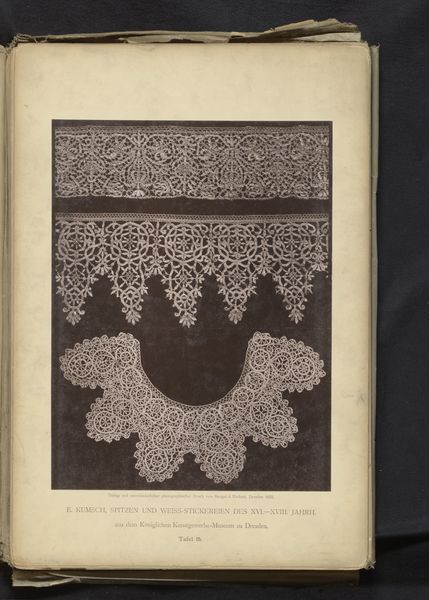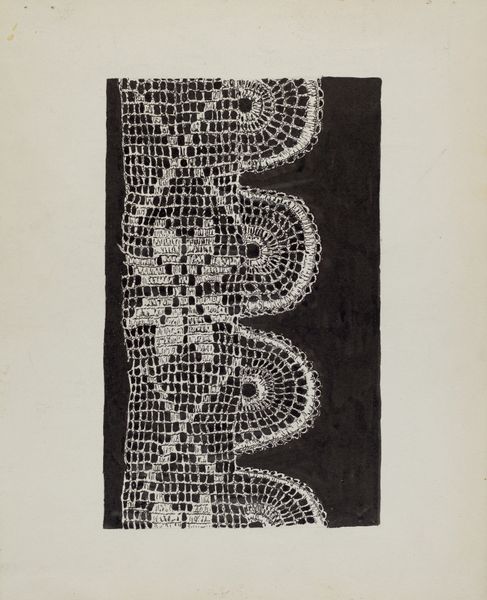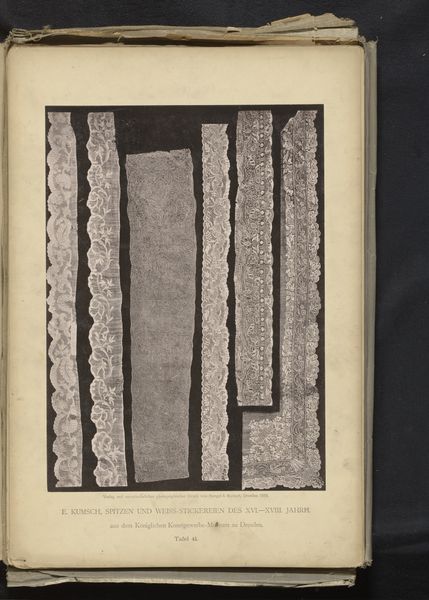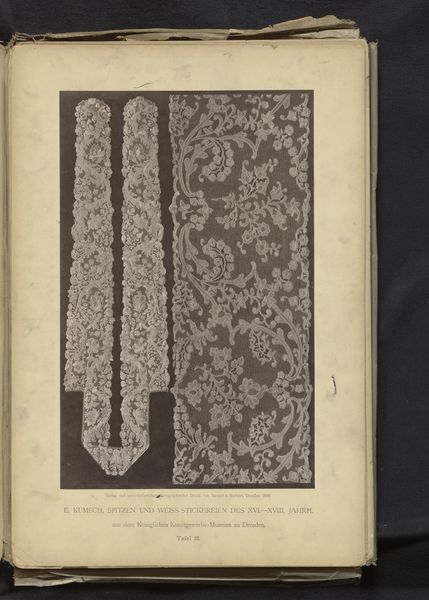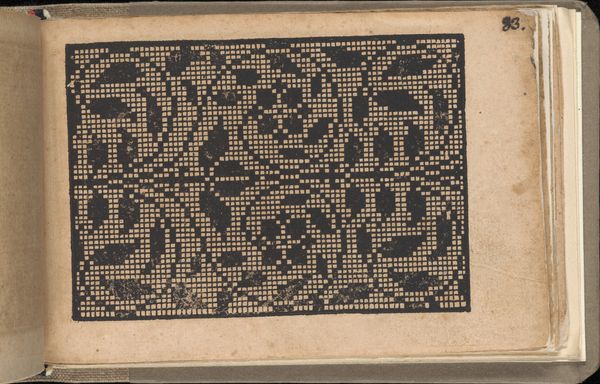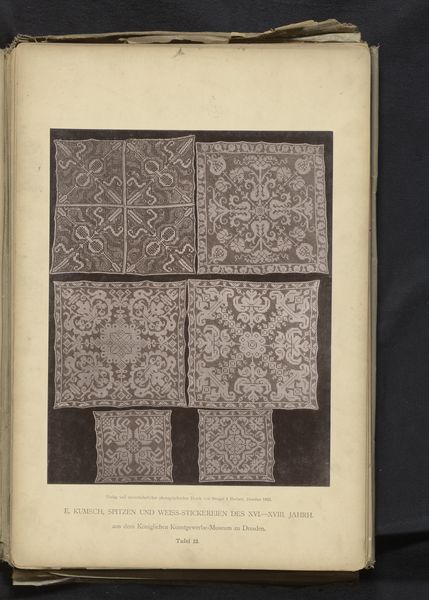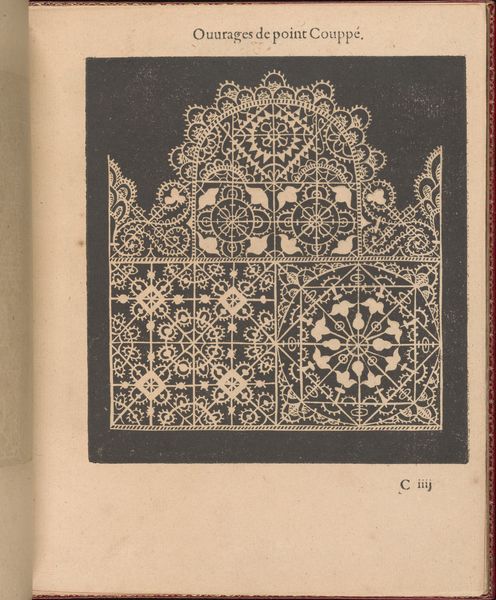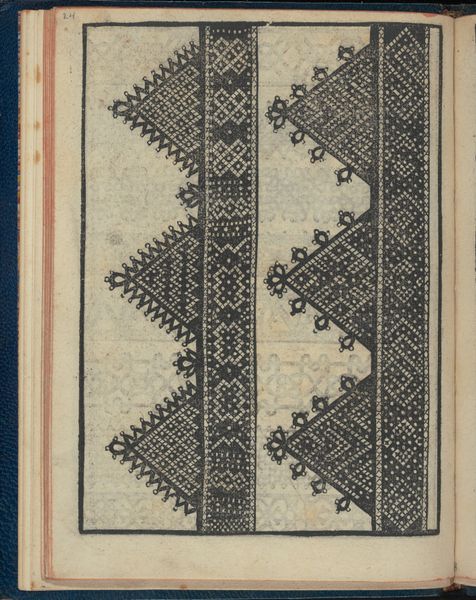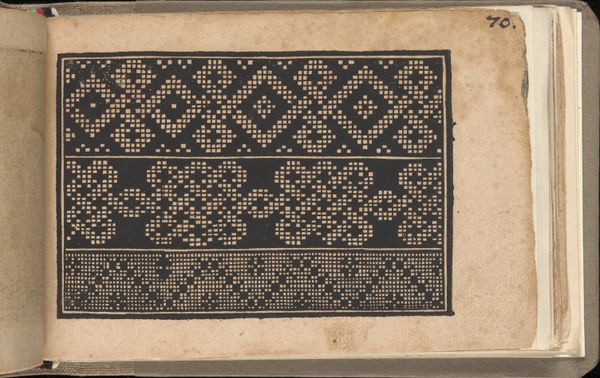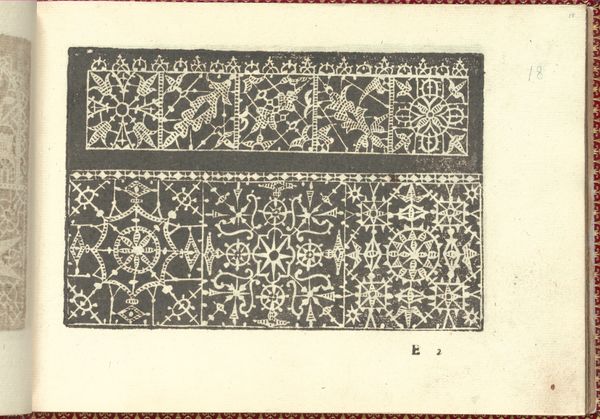
Vijf stukken 17de-eeuws Italiaans kant uit de collectie van het Kunstgewerbemuseum in Dresden 1888
0:00
0:00
anonymous
Rijksmuseum
mixed-media, print, textile, photography
#
mixed-media
# print
#
textile
#
11_renaissance
#
photography
#
decorative-art
Dimensions: height 245 mm, width 344 mm
Copyright: Rijks Museum: Open Domain
These five pieces of Italian lace were made in the 17th century, likely of linen thread, painstakingly worked by hand. Consider the time it would take to produce such intricate patterns – each twist and knot a testament to the lacemaker's skill. Lace emerged in the 16th and 17th centuries as a highly prized luxury item worn by elites as a display of wealth. Sumptuary laws, which attempted to regulate consumption, testify to lace’s desirability. Centers of production developed across Europe, none more impressive than Venice, Italy. The production of lace, usually by women, was arduous and poorly compensated. These lengths of delicate, handmade material embody both the beauty of skilled craftsmanship and the social inequalities of the time, complicating any simple distinction between art and craft, luxury and exploitation.
Comments
No comments
Be the first to comment and join the conversation on the ultimate creative platform.
